Historic Downtown Salem | Art, Architecture, and Attractions
A summer daytrip to downtown Salem includes a visit to the Peabody Essex Museum and walking tours of Salem’s historic architecture and maritime history.
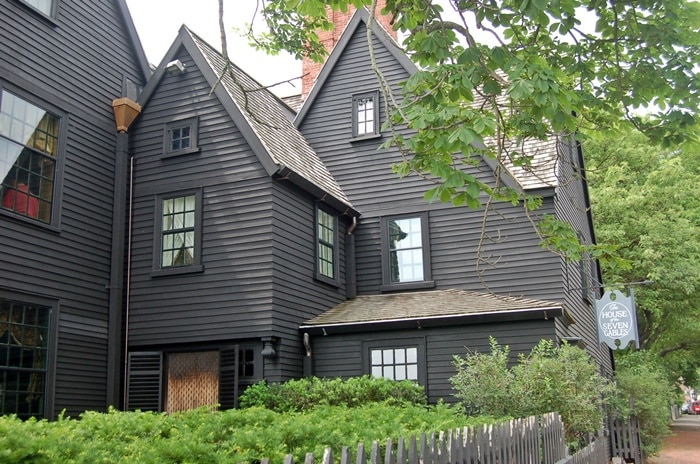
Coffee By Design | Portland, Maine
Photo Credit : Katherine KeenanWe all know Salem, Massachusetts, has the witch thing covered, but a stroll through historic downtown Salem offers much more than just magic and mayhem. A first rate art museum, historic architecture, tasty lunch options, eclectic shops, and numerous reminders of the town’s maritime past make Salem the perfect spot for a summer day trip.
My summer day trip to Salem started with a visit to the modern, bright, and sunny Peabody Essex Museum. Established in 1799, it can be considered one of the oldest continuously operating museums in the country. Located today in a prime downtown setting, the museum’s total holdings include about 1.3 million pieces as well as twenty-two historic buildings. Many of the pieces are works of art and culture focusing on maritime art and history; American art; Asian, Oceanic, and African art; Asian export art; two large libraries with over 400,000 books and manuscripts.
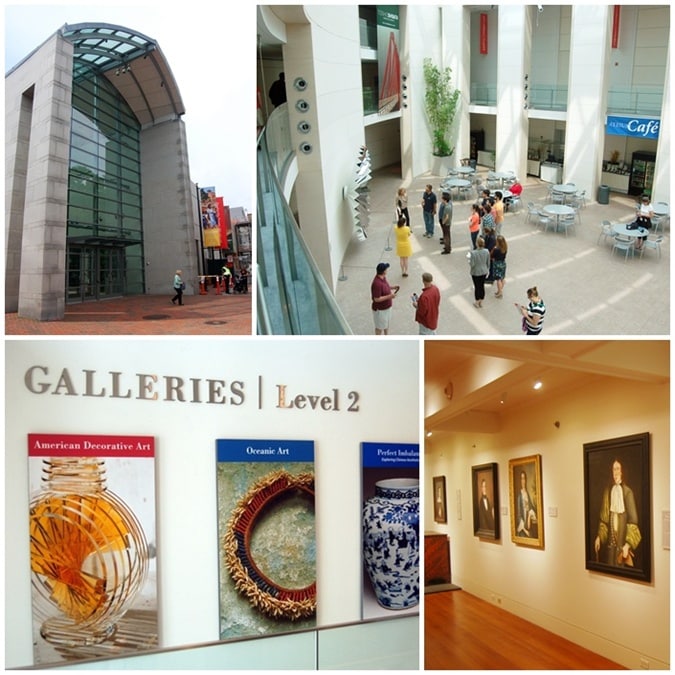
Photo Credit : Aimee Seavey
My favorite PEM gallery is the East India Marine Hall. The room is cavernous with a wall of windows and an expanse of wooden flooring. The walls are home to several figureheads (the carved wooden decoration, usually of a person, mounted to the prow of ships from the 16th through 19th centuries) and other maritime-themed paintings and artifacts.
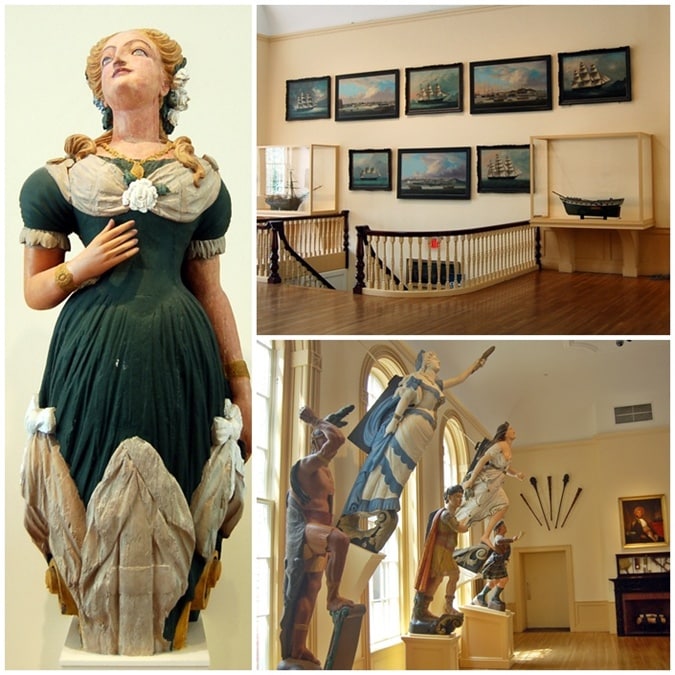
Photo Credit : Aimee Seavey
Once I left the PEM, I headed down Essex Street. Trolleys packed with tourists, office workers grabbing coffee, and locals joined me. The brick and cobblestones give the downtown area a cozy, historic feel that makes it seem like any hometown Main Street, but with a little extra magic. This is Salem, after all…
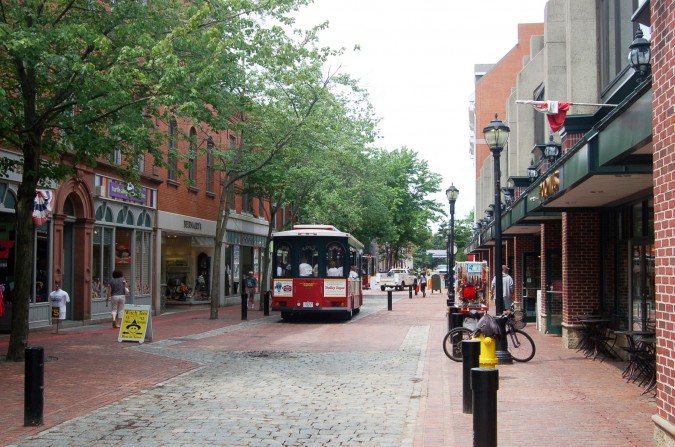
Photo Credit : Aimee Seavey
Wanting to check out some of Salem’s historic homes on this visit, I made my way towards the McIntire Historic District. The Salem Witch House on the corner of Essex Street and North Street serves as a sort of unofficial entrance to the district, and is pretty hard to miss. The house belonged to Judge Jonathan Corwin and is the only structure still standing in Salem with direct ties to the infamous witch trials of 1692. Tours of the house provide information about life in the 17th century and insight into the trials.
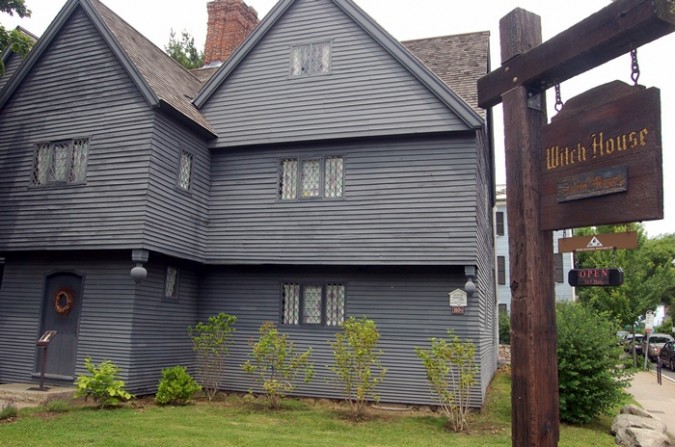
Photo Credit : Aimee Seavey
Salem’s McIntire Historic District boasts numerous Georgian- and Federal-period houses designed or influenced by architect (and Salem native) Samuel McIntire. Helpful markers underfoot help visitors find their way, and within moments I was walking along wide brick sidewalks and surrounded by beautiful old homes.

Photo Credit : Aimee Seavey
One such dwelling was the Ropes Mansion, which was home to three generations of the Ropes family and is now part of PEM. Built in the Georgian style in 1727, it renovated in 1894 in the Colonial Revival style.
Turning onto Chestnut Street, I had to remind myself that I was a short walk away from downtown Salem and not on Nantucket. The wide street lined with spectacular brick and wooden homes is considered one of the most beautiful streets in America, and I already can’t wait to visit it again when the leaves change, and again when it snows. I bet it looks stunning during the holiday season.

Photo Credit : Aimee Seavey
The Federal-style Phillips House is open to the public for tours from May through October, and its carriage house is home to a collection of antique vehicles.
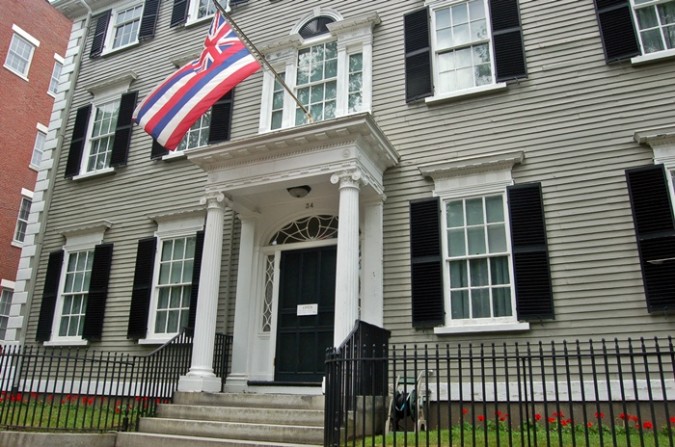
Photo Credit : Aimee Seavey
Hamilton Hall (named after Alexander Hamilton) was designed by McIntire and built between 1805 and 1807. It continues to be a popular spot for activities, largely thanks to its handsome ballroom that takes up most of the second and third floors.
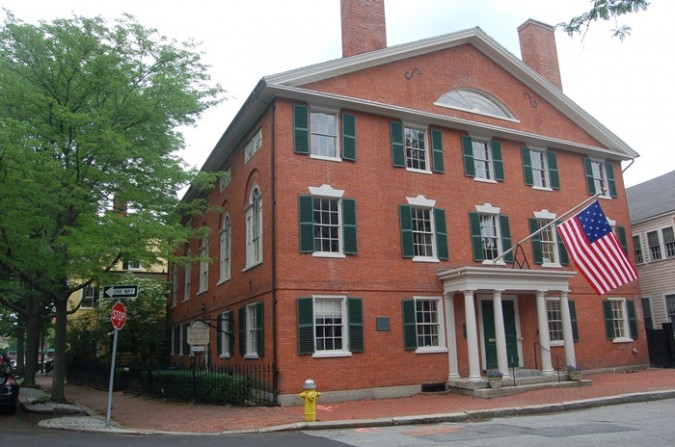
Photo Credit : Aimee Seavey
Finding myself back on Essex Street, it was time for lunch. I made my way to Gulu-Gulu Cafe, where I could sit outside and enjoy the summer sun and people-watch on the patio. My sandwich wrap, which came stuffed with grilled Portobello mushrooms, tabouli, hot pickled peppers, baby spinach, feta cheese, fresh tomatoes and red onion was also quite good.
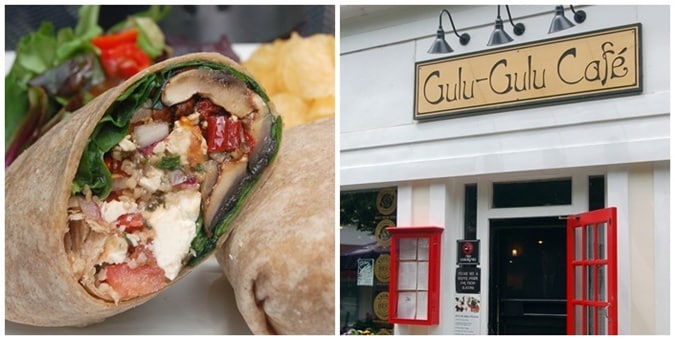
Photo Credit : Aimee Seavey
Energized and full, I headed off towards the water with a quick stop at the 1637 Burying Point, the oldest burying ground in Salem, and the final resting place of our friend Mr. McIntire. It was a typical Salem experience to stroll through a 17th century graveyard with a view of the Salem Wax Museum in front of me and simultaneously smell of the ocean, fried seafood, and patchouli.
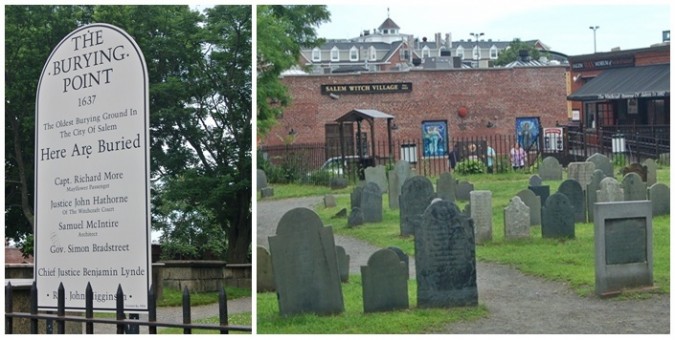
Photo Credit : Aimee Seavey
I next made my way to the Salem Maritime National Historic Site, which spans around nine acres on the waterfront and includes twelve historic structures. Two fine brick examples are the Georgian Derby House, built in 1762 by Captain Richard Derby as a wedding gift for his son, and the 1819 Customs House (the 13th in Salem at the time) where taxes were collected on imported cargo.
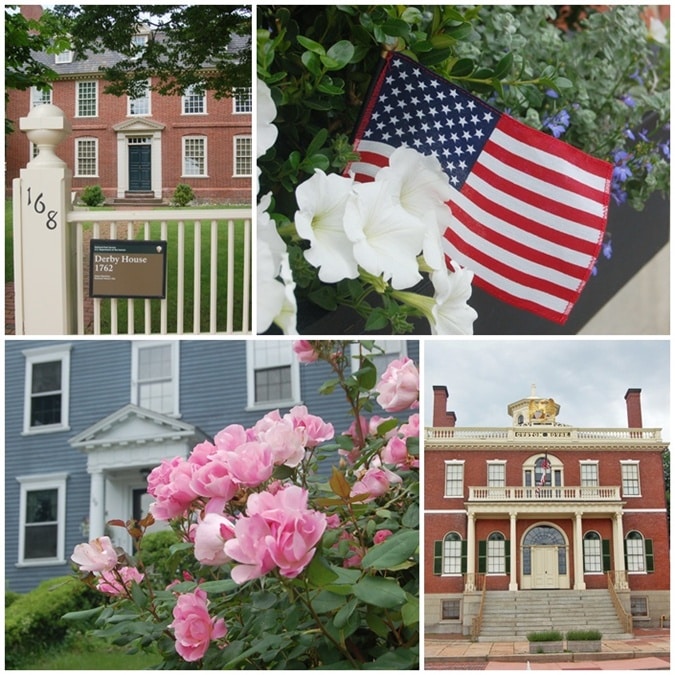
Photo Credit : Aimee Seavey
Also on display is the Friendship of Salem, a 2000 replica of the original 1797 ship of the same name that made fifteen voyages during her career to Batavia, India, China, South America, the Caribbean, England, Germany, the Mediterranean, and Russia before being captured by the British during the War of 1812.
Then it was on to the House of the Seven Gables. As I got closer I spotted the Ye Olde Pepper Candy Companie, which claims to be America’s oldest candy company (making candy the old fashioned way since 1806). As a pretty serious candy lover, I was intrigued by the words “Home of the Famous Gibralters and Black Jacks” — what could these be?
The friendly folks inside were happy to oblige me with a sample of peppermint Gibralter (it also comes in lemon), said to be the first candy made and sold commercially in America and carried around the world by sea captains and their crew. It tasted like a melt-in-your-mouth after dinner mint. Black Jacks (which I didn’t sample) are a stick candy made from old fashioned black strap molasses, and are still made by hand today just as they were 200 years ago.
I opted to buy some butterscotch drops to take home with me, and they didn’t last long.
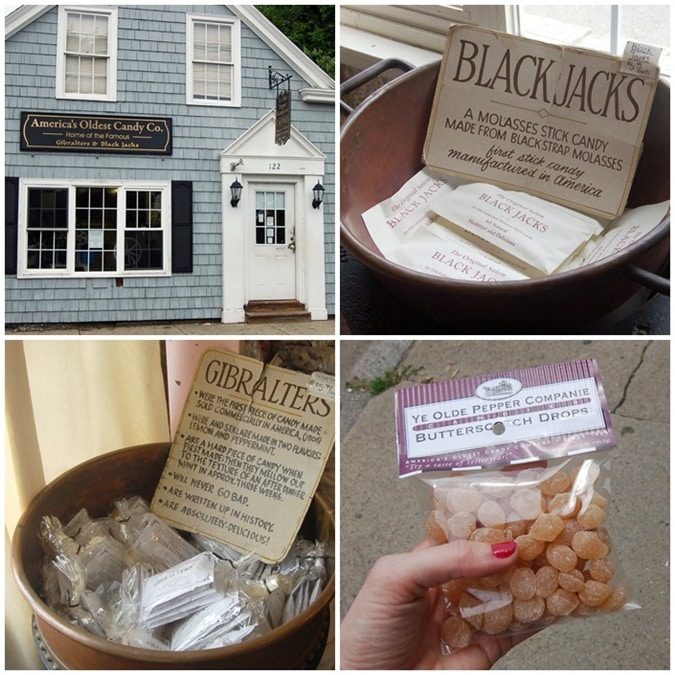
Photo Credit : Aimee Seavey
The House of the Seven Gables is a 1668 colonial house that claims to be the oldest surviving mansion house in continental North America with 17 rooms and over 8,000 square feet, but it is most commonly known as the house that inspired author and local resident Nathaniel Hawthorne to use it as the setting and title for his 1851 novel The House of the Seven Gables. Over its nearly 350-year history, the house underwent numerous expansions and renovations (with gables coming and going) until the early 1900’s when it was restored and set up an admission-museum, which is remains today.
I opted not to go on the tour, which is why the photo below is at an odd angle down a side street, but you get the idea.
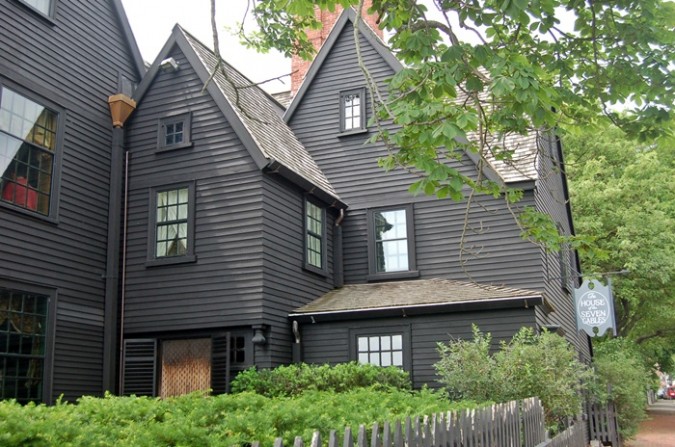
Photo Credit : Aimee Seavey
With clouds darkening and rain coming, I ended my day in historic Salem with a final stroll back down Derby Street, up Orange Street, and back onto Essex and my waiting car. Along the way I met several reminders of Salem’s dominant claim to fame mixed in with the typical shops, restaurants, and businesses of a normal city — stuffed witches on the sidewalk, businesses with witch-themed names, countless psychic options, and even a statue of Elizabeth Montgomery as famed 1960’s TV witch Samantha Stephens.
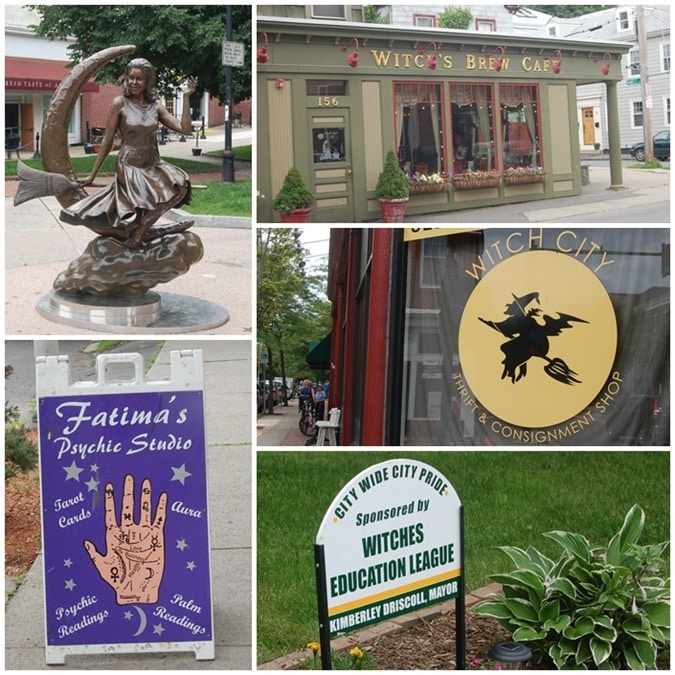
Photo Credit : Aimee Seavey
These days in Salem, it’s good to be a witch, but it’s also a terrific place to visit if you’re interested in art, colonial architecture, maritime history, and even old-fashioned candy in a fun, walkable setting with plenty of restaurants and shopping to keep you moving. Why not skip the crowds of October and head to Salem in the summer?
Have you ever visited historic downtown Salem?
This post was first published in 2013 and has been updated.




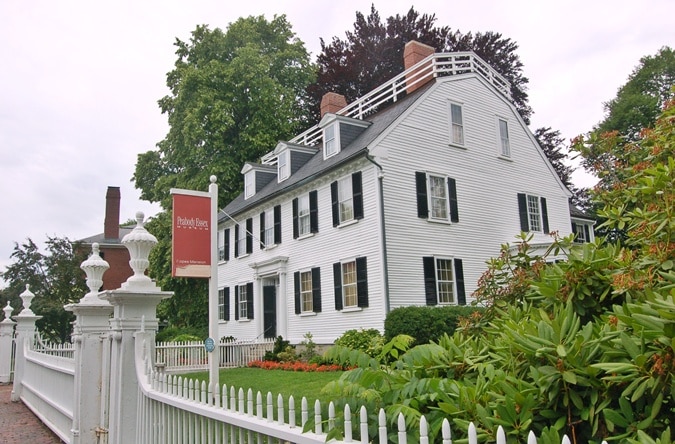




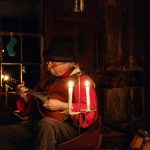
Oh, I just love Salem too. Reading this makes me want to take a trip there soon!
Just got back from a 2nd trip to Salem in as many years. We LOVE it there, so much to do and the architecture is just astounding and the homes beyond beautiful. Thank you for mentioning Gulu-Gulu, one of our favorite places to eat..and don’t forget The Lobster Shanty! YUM! If I retire with enough money, this will be the place I do it in. Thanks for the great coverage…feels like I never left.
The mass murder of dozens of innocent people by mentally unstable religious fanatics is selling coffee and bagels, in the modern age, for their descendants!
Oh not “dozens.” Nineteen. Twenty if you count one man who died under interrogation–they crushed him with heavy stones.
I love it here!! It is where I belong!!! Magical place! I want to come home???
If you loved Chestnut St., please return for the Historic Salem, Inc. annual house tour which many times will feature the McIntyre District.
Taking a three day tour with my family next week <3 Can't wait.
If you love Mexican food. I recommend the Howling Wolf Taqueria it’s on Lafayette Street in Salem. It can be crowded but the food is really good here.
2 sites most visitors to Salem never see, and they are where the main events of the Salem Witch hysteria happened. These sites are in what then was called Salem Village, and now is called Danvers:
The Meetinghouse: this is where the trials were conducted by judges John Hathorne, William Stoughton, Jonathan Corwin, and Samuel Sewall. Stoughton was later honored by having the town of Stoughton and a freshman dorm in Harvard Yard named for him. Stoughton as chief judge was the most abusive and vindictive, and the only judge without a legal education, he was a politician. John Hathorne was the great-great-grandfather of Nathaniel Hawthorne. Nathaniel changed his name to distance the association. Samuel Sewall spoke a confession of his errors in 1697 in the Cedar Street Meeting House, Boston, which became the Old South Church shortly after. Sewall also wrote the first Abolitionist treatise in North America in 1700.
Where the Meetinghouse once stood, there’s a sign I’ve attached below which described the events (picture 3629). All the judges were promoted to higher positions in State government or in the court system after the witch trials.
The Meetinghouse was moved across the street from whence it once stood, and was allowed to crumble into dust. A witchcraft victims’ memorial was built in 1992 (300th anniversary) on its remains; hence the victims’ memorial rests on the crumbled remnants of that building in which they were condemned to die. Here is the site: http://salem.lib.virginia.edu/Commemoration.html
2. The Parsonage (3639), 750 feet north of the Meetinghouse, is where a slave, Tituba, told witch stories to: Elizabeth (Betty) Parris, daughter of the Parson Samuel Parris who lived in the Parsonage; Abigail Williams, her cousin; Ann Putnam, Jr., their friend and neighbor; and Mercy Lewis, a servant. These four were the core team amongst 10 accusants. Parson Parris egged on the girls and promoted the hysteria. The Parsonage is very difficult to find because hidden behind private homes. The google map coordinates are 42.566186, -70.962230
When I went there a tiny pathmarker on Centre St. was buried inside an overgrown bush. Look for the right-of-way into the Parsonage ruins in between 65 Centre St. and 67 Centre St., Danvers. Search carefully or you’ll miss it.